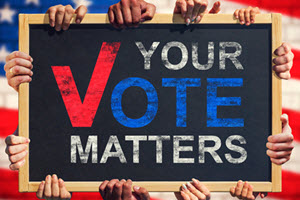UPDATE 2-26-2024 2230: HB 1235 is up for 3rd reading TOMORROW 27 Feb. 2024! Based on votes on the two failed amendments I expect there will be resistance on 3rd reading. CONTACT YOUR SENATOR ASAP and urge him/her to support HB 1235!
We are about to start the 4th quarter of the 2024 Indiana General Assembly Legislative Session. Two Bills we’ve focused on- HB 1084 Privacy of Firearms Financial Transactions and HB 1235 Prohibited Causes of Actions Concerning Firearms– made it out of their respective committees this week and are headed to the Senate floor. THANK YOU to all of our members that took the time to contact your Representatives and Senators- your diligence has paid off! But we’re not there yet! This is a great time to step back and take a look at the “big picture”.
Since the is a “non-budget year” (Indiana’s State budget is passed every-other year on odd years) this is a “short session”. Things moved really fast in the 1st half and even faster so far in the 2nd half.
A bill which didn’t receive a lot of notoriety was House Bill (HB) 1143, Disposal of Firearms via Trade for New Equipment. HB 1143 definitely got my attention when it passed the House 83-14 with 16 Democrats voting in-favor. This bill gives law enforcement agencies more options with firearms that would go to public auction. In addition to auction, these firearms can be traded for new equipment or ammunition with other law enforcement agencies, federal firearms licensees, or licensed firearms manufacturers.
I was at the Statehouse to support another bill in the Senate Corrections and Criminal Law Committee and saw the opportunity to testify in support of HB 1143. More options lead to a better use of resources. A better use of resources leads to paying less in taxes. On 20 February HB 1143 passed the Senate Corrections and Criminal Law Committee on a 6-2 vote. On 22 February it passed 2nd reading in the Senate with no amendments and will now upon 3rd reading have a vote in the full Senate.
Also on 20 February in the Senate Corrections and Criminal Law Committee for a hearing was HB 1235 Prohibited Causes of Actions Concerning Firearms. This bill prohibits political subdivisions from suing the gun industry and will end the 24+ year old lawsuit known as the City of Gary v Glock. This bill had passed the House on a near-party-line vote.
I had predicted in legislative alert emails that this one would be a fight. While my predictions aren’t always accurate, I was right this time. Along with the usual suspects in opposition was the lead-attorney for the Brady Campaign (formerly known as Handgun Control Inc.) A great Team from the Pro-2A side included: Guy Relford from The 2A Project, John Weber from NRA-ILA, Christopher Lee from the National Shooting Sports Foundation, Constitutional Attorney Jim Bopp Jr. from Terre Haute, and myself representing the Indiana State Rifle and Pistol Association. We also had a few citizens representing themselves in support of HB 1235. THANK YOU to all who supported this effort!
HB 1235 passed out of committee on a 5-3 vote (not a party line vote, we had one Republication side with the Democrats.) Look for more legislative action alert emails on this one, the fight isn’t over.
On 21 February in the Senate Insurance and Financial Institutions heard HB 1084 Privacy of Firearms Financial Transactions. This bill prohibits developing a registry of guns and gun owners through tracking financial transactions and merchant category codes. HB 1084 passed the House 73-22 with six Democrats voting in favor.
After the previous day’s fight with HB 1235, this day went much better. While the red-shirted Moms Demanding Action filled the front row of the hearing room, only one of them spoke in opposition. In support of HB 1084 was once again Guy Relford from The 2A Project, John Weber from NRA-ILA, myself representing the Indiana State Rifle and Pistol Association and a few private citizens who recognized the importance of this legislation. HB 1084 passed out of the Senate Insurance and Financial Institutions on a 6-2 vote.
We are in the 4th Quarter of the legislative session but there is a lot of game yet to be played. Look for Legislative Action Alerts supporting both HB 1084 and HB 1235. Opportunities to let your State Senator know the gun owners of Indiana are paying attention will be coming soon.
In Liberty,
Kelly Myers
ISRPA Government Affairs Co-Director




